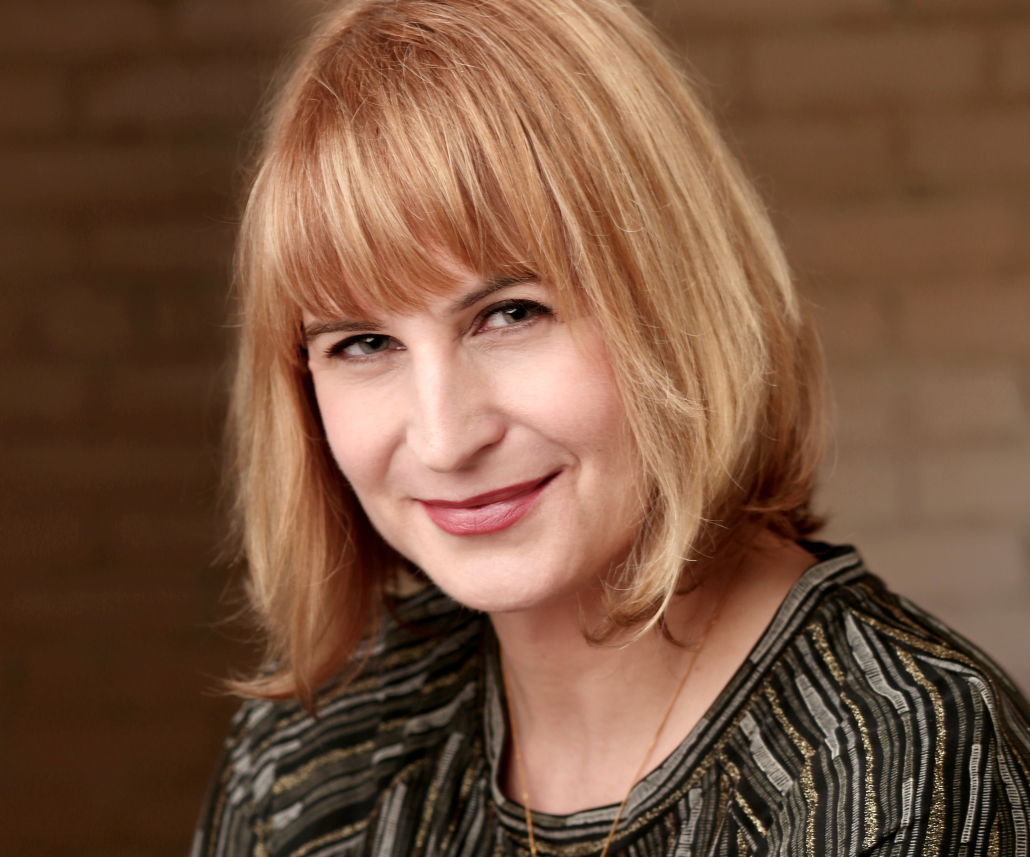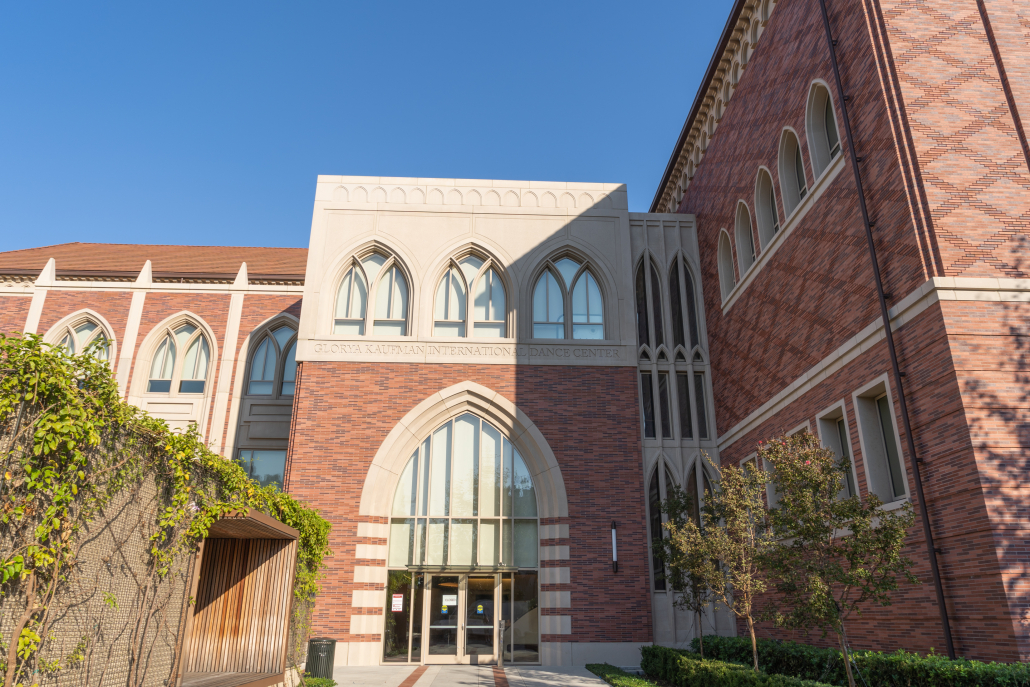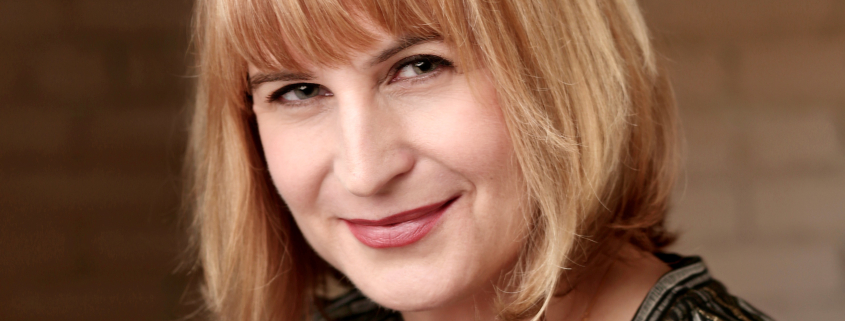A timely transition, a ‘dream come true’: Julia Ritter envisions a versatile Kaufman

Kaufman School of Dance Dean Julia Ritter has always been moving. Nursery school teachers told her mom she was rhythmic and loved partnering movement with music, a talent and drive that led her to pursue an undergraduate degree in dance and a nearly three decades-long career in higher education.
A dance artist, researcher, scholar, pedagogue and former chair and artistic director of the dance department of Mason Gross School of the Arts at Rutgers University — a position she held from 2010 to 2021 —, Ritter succeeded founding Dean Robert Cutietta. Cutietta, who also served as the dean of the Thornton School of Music and created the Kaufman School in 2014, stepped down from both deanships in May 2022.
“The former leaders set up an incredible school,” Ritter said. “I mean, to build a school in such a short amount of time, that’s had an incredible reputation, takes a lot of insight, takes a lot of hard work.”
Ritter, who came to Los Angeles after many years of living and working in New York City, said she was excited by the opportunity to live in “one of the most vibrant economic [and] creative capitals of the world.” Taking over the reins of leading Kaufman interested her, too, because of the school’s position as a new, young community dedicated to dance.
“Having the opportunity to be at the center of dance in L.A. is really one of the key things that brought me to Kaufman,” Ritter said. “There’s so much to learn about the community across L.A., but then also the dance community at USC, which I’ve learned over the past few months is vibrant in and of itself.”
Holding degrees from Texas Woman’s University, Temple University and Rutgers University, Ritter said she values the introduction higher education gave her to improvisation and choreography, which have been a source of “pure joy” throughout her life.
“I truly believe improvisation and choreography are collaborative processes, and I’m a big proponent of being in collaborative and devised spaces,” Ritter said. “Creating the conditions where there can be lots of input from many different people are some of the most exciting realms of being for me.”
Ritter’s vision for Kaufman — which, she said, is informed by the interests of the school’s constituency of students, staff, faculty, the Board of Councilors and partners in the greater L.A. community — includes thinking more broadly about performance.
“We have proscenium performances in theaters, both here on campus and out in the community of L.A.,” Ritter said. “But we also want to think about site-specific performances and performances that might happen in places across the campus that might be surprising.”
Audiences can have a manifestation in almost any discipline … A lot of it is thinking about how we serve others and serve our communities. I like to often talk about that in terms of wondering, “Who are we serving, how are we serving and how better can we serve them?”
Julia Ritter
Ritter is also looking to expand the scope of identities dancers can hold: Kaufman, she said, was founded to create exceptional dance performers who could walk into any sort of performance environment and be literate, so the curriculum is built around training dancers to many kinds of literacies.
“Another part of building and maturing the Kaufman school would be thinking about multi-hyphenate artists, and that dancers can take on many, many different kinds of pathways toward building their own careers,” Ritter said.
Many students, Ritter said, want to build technical strength, but are also intellectually curious and eager to “really craft a life for themselves that speaks to their values and speaks to their interests.” The school is thinking through a curriculum that would allow dance students to take on other majors and explore interdisciplinary interests, she said, by opening up schedules to make time for speakers and collaboration time.
Ritter described USC as a “school of schools,” a structure that varies greatly from Rutgers, she said. The fact that USC houses six art schools — the School of Architecture, the Roski School of Art and Design, the School of Dramatic Arts, the School of Cinematic Arts, Thornton and Kaufman — is “just incredible,” she said, and invites potential for inter-school collaboration to help students move across discipline lines.
“The two institutions [USC and Rutgers] are very different in terms of structure, and I find that really exciting to come together with the other arts deans, and also the deans from other disciplines, to talk about our shared missions,” Ritter said.
Haven Lin-Kirk, dean of the Roski School of Art and Design, wrote in a statement to the Daily Trojan that she believes Ritter brings “deep knowledge and a profound understanding of the art of movement and dance.”
“I’ve already found [Ritter] warm and open to collaboration with Roski and the other art schools,” Lin-Kirk wrote. “I look forward to working further with Kaufman through future programs.”
Ritter said her service at Rutgers instilled in her an interest in audiences as a concept with different meanings. Audiences, she said, are traditionally seen as relegated to performance, but they exist in other contexts, too.
“Audiences can have a manifestation in almost any discipline … A lot of it is thinking about how we serve others and serve our communities,” Ritter said. “I like to often talk about that in terms of wondering, ‘Who are we serving, how are we serving and how better can we serve them?’”
The dance scene, both in performance and education, was heavily impacted by the coronavirus pandemic, Ritter said, and performers and academics are now trying to imagine what dance should become.
“All of us are still recovering from the trauma of the pandemic and figuring out what does dance mean now and what can dance be now,” Ritter said. “Many dance organizations really struggled through the pandemic.”

New Kaufman graduates, Ritter said, are entering an industry still recovering, so the school is working to ensure students can thrive in hybrid and online environments as well as live environments. Teaching and learning dance over Zoom was difficult, she said, but Kaufman took the challenge as insight into the role of technology in dance and the importance of understanding dance media.
Ritter never stopped creating choreography, despite her foray into administrative roles, which she said she took on because she became interested in what it means to be a leader in dance.
“[I became] really interested in … how we can take a field that can sometimes be challenged … A lot of resources are needed for dance, you need a lot of people to dance, you need big spaces to do dance, you need costumes, you need lighting — how do we advocate for those kinds of resources?” Ritter said. “That became a really interesting challenge to me.”
A recipient of three Fulbright Scholar awards, Ritter has traveled across the world — from Germany to Taiwan to Turkey — to share her scholarship and glean new perspectives on dance.
“I pursued those opportunities … because it would allow me to be in new spaces,” Ritter said. “In some ways, that’s a bit of a theme for me — to come out to L.A. as a new space, too. I’m always really interested in, ‘What does it mean to dislocate ourselves from our comfortable surroundings?’”
Patrick Leder-Morrow, assistant dean and chief development officer of Kaufman, said Cutietta’s departure from the role elicited some worries among faculty members about the school’s future, as he was “such an integral part” of Kaufman’s success. Ritter’s arrival quelled any concerns, Leder-Morrow said.
“She’s … really done a lot to really pull the school together at a time when it could start to fray because Rob was no longer with us,” Leder-Morrow said. “The moment she stepped foot in the building, she tightened that up and made us all feel like, ‘Oh, this is gonna be good; She’s gonna be good.’”
Leder-Morrow manages fundraising for the school and said Cutietta was involved hands-on in managing relationships with donors and supporters, but his time was split between Kaufman and Thornton.
“[Cutietta] was in the trenches,” Leder-Morrow said. “The problem was, he was in two trenches.”
Leder-Morrow and his colleagues couldn’t really picture what it would be like to have a full-time, Kaufman-only dean, but now that Ritter has served in the role for more than seven months, he said they “didn’t know what [they] were missing.” From the time she assumed the position, Leder-Morrow said Ritter has allowed him to guide her through forming relationships with the school’s key constituents, including its 20 major donors.
“I really respected her for that and I greatly appreciated the competence that she was showing in me and, I think, her interest in doing what was best not for her, but for the school,” Leder-Morrow said.
Cutietta’s step down came at a “turning point” for Kaufman, Leder-Morrow said, as the school has been riding high on its newness for nearly a decade. The time has come, he said, to reflect on sustaining the success the school has had and maintaining an upward trajectory of innovation and growth.
“I feel like this leadership transition, although it’s challenging, it couldn’t have come at a better time because, naturally, the school has gotten to a place where it’s time to make a shift,” Leder-Morrow said. “Having Julia come in with this fresh perspective and with her background and expertise and experiences is really going to be great for the school in terms of ‘What is Kaufman 2.0?’”

